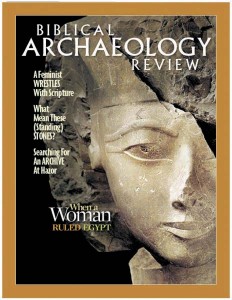The Met Expedition to Deir el-Bahri
Sidebar to: When a Woman Ruled Egypt
Hatshepsut’s magnificent funerary temple at Deir el-Bahri, near the Valley of the Kings, remained in use for more than 2,500 years—as a memorial of the female king, a temple of Amun, a healing center, a Ptolemaic temple and a Coptic monastery (the last datable inscription was left by a pilgrim in 1222–1223 A.D.).
In the late 18th century, Napoleon’s expedition to Egypt visited this site. Numerous European adventurers explored the ancient ruins over the following century. The first major excavation was conducted by François-Auguste Mariette, the director of Egyptian antiquities, in the 1850s and 1860s. The British Egypt Exploration Society then excavated the site from 1893 to 1899 and made the first restorations. New York’s Metropolitan Museum of Art (Met) sponsored excavations at Deir el-Bahri from 1911 to 1936. Major excavations at the site have since been conducted by Warsaw University.
In the early 1920s, the Met expedition began uncovering fragments of statuary that had once adorned the temple. Over the next decade, Herbert E. Winlock, head of the excavations, and his young assistant, William C. Hayes, were able to reconstruct dozens of figures of Hatshepsut that had once formed part of the temple architecture but were later smashed. Winlock described the work: “Imagine nearly a hundred jigsaw puzzles—every one of them lacking some parts—all mixed up together. Picture some of the pieces no bigger than the tip of your finger and others so heavy that it takes a large derrick to move them. Then consider that the edges of these pieces are often so delicate that they crumble away unless they are handled with the most delicate care—even when they weigh a ton or more. That will give some idea of the work that has been going on at our camp at Thebes.”
Already a library member? Log in here.
Institution user? Log in with your IP address.

